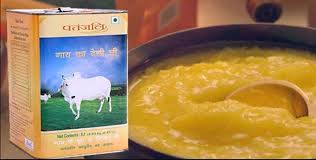Laminated Plastics: what to do with it ?

Laminated Plastics: what to do with it ?
Vipin Kumar
Dehradun , Jan 24
The packing industry the world over has innovated new designs for their products insuring stability and durability of the packed material. The polymer plastic with its intrinsic property of being stable is air and moisture resistant. The relative economics in terms of cost of transportation and storage further makes it the choicest material for the food industry. The boom in the fast food industry has been due to the availability of cheap plastic packing which insures freshness of the packed material to the consumer for about six months from the date of packing.
The chemistry of polymers being a complicated science of bonds of carbon and hydrogen tends to stretch its realm to six categories with the unclassified ones being listed in ‘others’. It is the last group of plastics which makes the recovery of such material as a futile exercise as it has no value addition in the absence of its recycling potential. However, in tune with the trends of competitiveness and global marketing strategies packing as a tool is proving to be a differentiator of products. The promotion of laminated plastics as efficient barriers to moisture for longevity of shelf period of food material is a growing trend in the packing industry. Sadly, these colourful laminated packings are no incentive for collection by rag-pickers as they have no recycling potential any where in the country.
The use of laminates in milk cartons, aseptic cartons, chocolate bars, potato chips pan masala and gutkha and a range of dry and frozen goods is on an exponential increase. The essential element in the processing of such material is the economy in terms of reducing the permeability of the single material, which otherwise would have required to have been thickened to meet the required standards for food preservation. However, from an environment point of view it is a viable alternative as the laminates like other polymers have the potential to pollute the environment to a greater degree than the single material packing. It needs to be emphasized that how so ever stable and chemically inert a substance may be it will undergo chemical decomposition due to ultra violet radiations.
In many cases there is waste saving that results from moving from a rigid form to a laminate yet in European countries especially Germany recycling the laminates is a prior condition for packing material. The “waste hierarchy” believes in “reducing” as a better option than “recycle” after all ? The wide variety of laminate combinations in the waste stream complicates the recovery task, because each laminate type may require a different recovery process during physical recovery of such material. The argument given in such cases is to dispose them off in landfills. The question is who shall pay for their recovery and bear the costs for land filling in a country like ours ? The consumer of such material are limited but then why should the environmental costs be borne by the non consumers ? And lastly why shouldn’t the companies be made more accountable in collecting their packings through a buy back mechanism ? There has to be a complete process of re- thinking pertaining to our laws regarding the packing material as a long term measure for environmental protection from the non-biodegradable post consumer waste. A concrete dialogue needs to be introduced on Extended Producer’s Responsibility for making the companies accountable on one hand and helping in evolution of Law on Material choice on the other.
(Vipin Kumar is an eminent environmentalist who has worked on garbage management in the Himalayas in the past more than three decades.)





